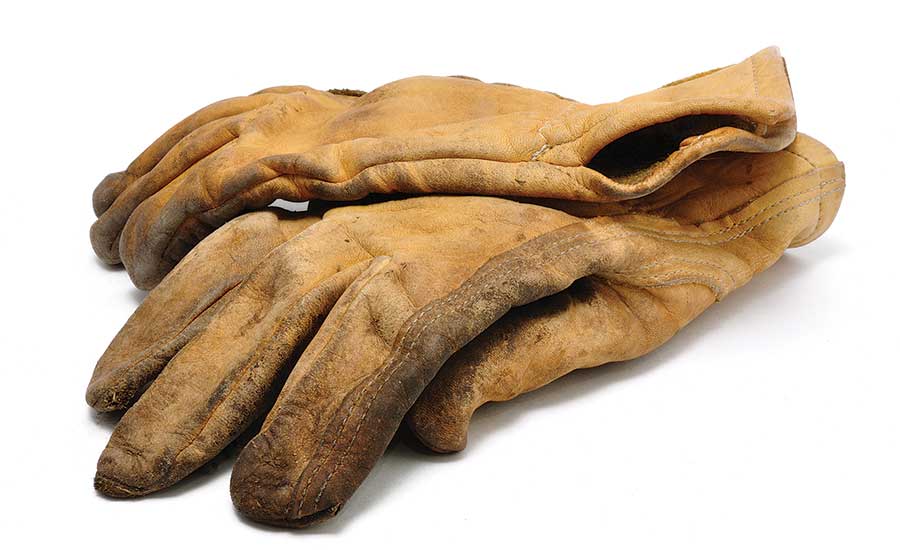Why this standard is important
The document classifies a whole glove or material used in the construction of an occupational glove to help people understand glove performance data if they are not familiar with the details of the test methods and the results to be expected when testing. This document provides or refers to appropriate test methods for specified criteria and provides pass/fail criteria to allow users to interpret test results and determine if certain hand protection products meet their needs.
One of the major changes in this fourth edition of ANSI/ISEA 105 surrounds the determination of classification for cut-resistance. For purposes of classifying a glove to this standard, a single test method has been selected in an effort to provide consistent meaning of the ratings from the end-user perspective. In addition, the number of classification levels has been expanded to address the disparate gap among certain levels seen in earlier versions and to model the approach used in similar international standards.
Hazard Protection
Hazards: cut-resistance, puncture resistance (other than hypodermic needle), hypodermic needle puncture resistance, abrasion resistance, chemical permeation resistance, chemical degradation resistance, heat and flame protection, ignition resistance and burning resistance, heat degradation resistance, conducive heat resistance, vibration reduction, dexterity.
The standard does not address protection from electric shock, ionizing or non-ionizing radiation, every type of thermal exposure and harmful temperature extreme, and every type of exposure to chemicals, biological agents, or other hazardous substances. This standard does not address protection for welding, emergency response applications or fire fighter applications.
Test Methods Used In This Standard
Cut resistance: ASTM F2992-15. Cut resistance testing measures how the glove material will resist cutting by a sharp edge. Larger weights reported by this test method indicate a glove material with greater cut resistance.
Puncture resistance (other than hypodermic needle): EN 388:2003. Puncture resistance testing measures how the glove material will resist puncture by a pointed object. Higher puncture forces reported by this test method indicate a glove with greater puncture resistance.
Hypodermic needle puncture resistance: ASTM F2878-10. Puncture resistance testing measures how the glove material will resist puncture by a sharp-edged needle. Higher puncture forces reported by this test method indicate a glove with greater puncture resistance.
Abrasion resistance: ASTM D3389-10 and ASTM D3884-09. Abrasion resistance testing measures how the well the glove material resists loss of material from rubbing on rough surfaces. Larger numbers of abrasion cycles until failure reported by this method indicate a glove with greater abrasion resistance.
Chemical permeation resistance: ASTM F739-12. Permeation resistance testing measures the rate at which chemicals (contacting the glove) pass through glove materials on a molecular level. Longer breakthrough times indicate materials with better chemical permeation resistance. Permeation rates may be used to determine how much chemical passes through the material in a given period
Chemical degradation resistance: Appendix B in standard. Degradation resistance testing measures the effects of a chemical on a glove material. In this test, the measured effect is loss of puncture resistance. Lower percentage changes in puncture resistance indicate gloves with greater chemical degradation resistance.
Ignition resistance and burning behavior (or after-flame time): ASTM F1358-08. Ignition resistance and burning behavior testing measures how easily a glove material will ignite and if ignited how readily the material will continue to burn once the flame is removed. Materials that show no ignition or longer ignition times and short after-burn times (time for the burning material to extinguish following removal of the flame) using this method are considered to perform better when exposed to a flame for a short time.
Heat degradation resistance: ISO 17493:2000. Heat degradation testing determines the exposure temperature at which gloves will be thermally stable (i.e., show no significant heat degradation). Higher temperatures reported by this method indicate gloves having greater heat degradation resistance.
Conductive heat resistance: ASTM F1060-08. Conductive heat resistance testing measures the insulation provided by the glove when in contact with a hot surface. Higher temperatures reported by this method indicate gloves with greater insulation for contact with hot surfaces.
Vibration resistance: ANSI S2.73-2002 (R2007). This measures the vibration transmissibility of the glove by comparing the difference between the two sites across a spectrum of frequencies.
Dexterity: EN 430:2009. Dexterity is the ability of the wearer to manipulate objects and control his hands in the desired manner. In this case, it is assessed by determining the wearer’s ability to pick up between his thumb and forefinger small diameter pins lying on a flat surface. The dexterity of the glove is highest when the wearer can pick up the smallest diameter pin provided.
Other Factors for Consideration
Natural Rubber Latex: Workers exposed to natural rubber latex as a component of gloves may develop allergic reactions. Latex gloves have proved effective in preventing transmission of many infectious diseases to healthcare workers. Some people exposed to latex develop allergic reactions in the form of rash, hives, itching and other symptoms. The medical community has not established safe levels of proteins to evaluate latex-containing products.
Viral Penetration Resistance: The penetration of viruses or other biological agents may be a concern for hand protection products that do not use continuous barriers or products using microporous films. Viral penetration resistance testing measures the effectiveness of whole gloves or glove materials in preventing the transmission of a bacteriophage, or viral simulant for Hepatitis and Human Immunodeficiency Viruses.
Chemical Penetration: In some work environment, chemical permeation resistance may represent a severe exposure to gloves not mimicked by all types of chemical exposures. For some exposures involving low hazard liquids, acceptable performance can be demonstrated by resistance to penetration.
Human Factors: Human factors relate to the fit, function, and comfort provided by gloves. The protection provided by gloves against specific hazards typically involves some tradeoff with hand comfort and functionality. These properties are generally subjective and will depend on the perception of the wearer, the type of work being performed, the environmental conditions, and the length of the wearing period.
Fit: Gloves should fit properly. The relative fit of the gloves may be a function of the particular glove design, available sizes for a particular glove style, and the personal preferences of the wearer for fit. Manufacturers provide numerical sizes (e.g., size 9) for some styles and size descriptions (e.g., small) for other styles. Some manufacturers provide sizing charts or indicate how to measure hands to select the appropriate sized glove based on their sizing system.
Function: Glove function is most often characterized in terms of dexterity, tactility, and grip. Criteria for dexterity are incorporated in ANSI/ISEA 105-2016. There are no standard tests for tactility. Often tactility is measured by how well a person can identify objects by touch without looking at the objects. Grip is affected by the type of treatment on the glove surface, the type of object being grasped and the presence of any wetness or other substances. Good grip in gloves allows the wear to hold heavy objects in different orientations.
Sponsor: www.showagroup.com, 1-800-819-6980




